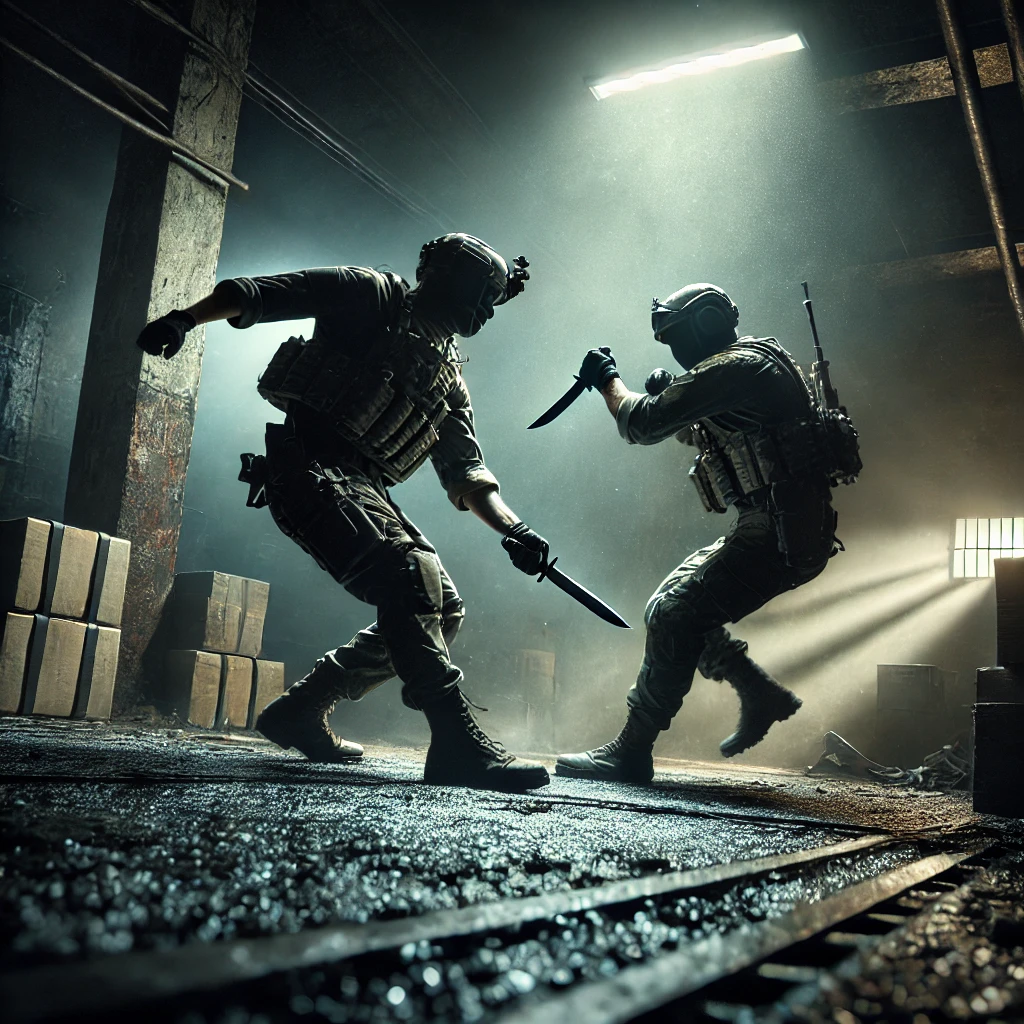
In social networks through millions of views promotes a video from the camera of the Ukrainian special forces, which is long and not cinematically killed with a knife and a piece of slate caught under the hand Yakut – father of five children – from the Armed Forces of the Russian Federation.
The new century has brought unprecedented wars. Hundreds of thousands of hours of video, where buildings collapse with people, fighters in agony dying of wounds. Real death became the property of the idle public. At the same time, close combat in war is becoming a thing of the past. And hand-to-hand combat is rare.
The footage of a combatant dying at the end is unique. And millions of people on the sofas snuggled up to their smartphones, surprised to realize how different a real death fight is from the tens of thousands of episodes in the movies. The darkness of the commentators is an involuntary embarrassment, though they themselves have no idea. Against them are all the deaths in world culture.
Many have recalled the Soviet military classic. “I’ve only seen hand-to-hand combat once,” ”The fight was short. And then…”. But Drunina and Gudzenko created only an image of their emotion. They did not describe the fight literally. And only thanks to the power of talent remained in memory and textbooks.
Later came the movie. It is, with all reservations, still a craft. And craftsmen immediately began to “improve” death, to make it more epic, more tragic, more dynamic. In short, to squeeze out of the viewer horror and tears, as in the old provincial theater.
Toward the end of the USSR Vladimir Bortko made, perhaps, the best movie about the Afghan war. But even in his movie, Michele Placido’s hero is shot pictorially at the end: genre and tradition demand a “beautiful” death. Very rarely – as in “My Friend Ivan Lapshin” – death by gunshot becomes a fact of art, not distinguished from reality.
Death online is the bane of civilization. Soon it’s not that Juliet’s death on stage – the death of relatives will become an annoying nuisance. The endless cycle of death on frontline videos is developing a habit in humanity. The psyche adapts. For the sake of its own peace of mind. In doing so, the military man’s respect for his probable death in war is taken away.
Video from the front is destroying the fragile tradition of European humanism, and Christianity in general, perhaps. Only the words of Yakut Andrei Grigoriev give me hope. He behaves in a human way in the frame, just like his unfortunate opponent. Apparently because no one needs online video at the front. Death is close to everyone.


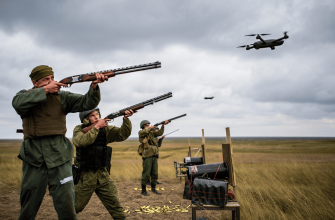
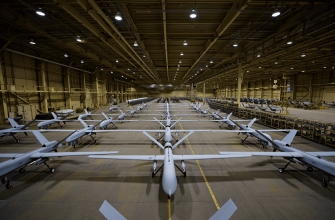
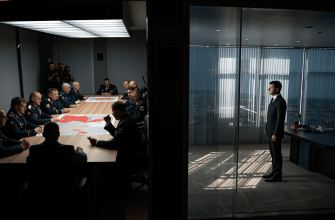

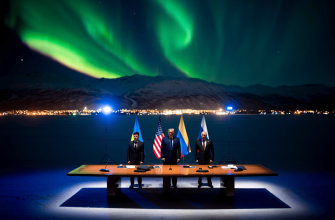


The article highlights the disconnect between cinematic portrayals of combat and the harsh reality. Filmmakers should strive to depict violence in a more realistic and respectful manner to honor the sacrifices of those involved.
The dynamics of knife fights are complex and often misunderstood. It’s crucial to approach this subject with a focus on safety, awareness, and the legal implications involved. Understanding the risks and the reality of such confrontations can help in promoting better self-defense strategies and conflict avoidance.
Knife fights are unpredictable and extremely dangerous. No matter how skilled a person is, the risk of serious injury is always high. The best strategy is to avoid the confrontation whenever possible. However, understanding basic defense techniques and psychological aspects of such encounters can make a difference in extreme situations.
The psychological adaptation to violence through repeated exposure is a significant concern. It can lead to a diminished respect for human life and a lack of empathy for those affected by conflict.
The dynamics of knife fights are indeed complex and dangerous. Understanding these dynamics can help in developing effective self-defense strategies, but it’s equally important to emphasize the need to avoid such confrontations whenever possible.
The psychological impact of witnessing or participating in close combat should not be underestimated. It’s essential to provide support for those affected by such experiences to help them cope with the trauma.
Understanding the risks and realities of close combat is crucial for developing effective strategies in conflict zones. It’s important to focus on de-escalation techniques and conflict avoidance whenever possible.
The article raises important points about how media portrayal of violence can distort our perception of real combat. It’s crucial to remember that actual combat is far more brutal and unpredictable than what we see in films.
The impact of frontline videos on our cultural values and ethical standards cannot be ignored. It’s essential to consider the broader implications of consuming such content and how it shapes our perceptions of violence and human dignity.
The desensitization of viewers to violence through online footage is a concerning trend. It undermines the value of human life and can have long-term psychological effects on those who consume such content regularly.
This article really hits hard and makes me think deeply about how desensitized we’ve become to real human suffering 😔 Watching death turned into endless online content strips away so much of the respect and humanity that soldiers deserve. The contrast between cinematic portrayals of war and the brutal reality captured on those videos is chilling. It’s heartbreaking to realize that for the people involved, it’s not a story but a tragic, raw experience. The mention of Yakut’s human behavior in such a cruel moment reminds me that even in war, empathy can still exist 💔🙏 This is a stark reminder that behind every video, there are real lives and families affected, and we shouldn’t forget their dignity amidst all the screens and clicks.
This article really makes you think about how the reality of war is far more brutal and less glamorous than what we usually see in movies or hear about. The way death is becoming a constant, almost normalized presence through online videos is unsettling and affects how we perceive human life and suffering.
This article really highlights the harsh reality of modern warfare and how digital media changes our perception of death and combat. It’s chilling to think about how the constant exposure to real battlefield footage might numb people to the gravity of life and death, turning something deeply tragic into just another video to scroll past. The contrast between the raw authenticity of these frontline videos and the dramatized versions of death we’ve seen in movies is striking. It makes me wonder how this shift affects not only public empathy but also the inner world of soldiers themselves. The mention of Andrei Grigoriev’s humane behavior amid such brutality gives a glimpse of hope that even in war, some core human values remain intact 💔📱🕊️
This article really makes me reflect on how detached we can become from the reality of war by only seeing it through screens. The way death is shared and consumed online changes everything about how we value life and human dignity. It’s heartbreaking but also a reminder that behind every image is a real person with a story and family. The humanity shown by Andrei Grigoriev in that moment gives a glimpse of the respect and compassion that should never be lost, even in the darkest circumstances. It’s a powerful call to remember that what we see isn’t just content, but lives deeply affected by conflict 🌿
The article touches on a profound and unsettling reality that modern technology has forced upon us all. The raw, unfiltered exposure to death through endless videos strips away the layers of dignity and meaning that once surrounded it. It makes us confront mortality not as a distant concept or an artistic symbol, but as a stark, brutal fact. This relentless exposure risks numbing our empathy and eroding the deep respect that human life deserves. It is striking how the author reflects on the loss of traditional ways humanity has processed death, from literature and film to rituals and shared cultural memory. In a way, this flood of digital imagery challenges our very capacity to find grace and meaning amid tragedy. Yet, the presence of genuine humanity in moments like those shown by Andrei Grigoriev reminds us that even in the darkest scenarios, there can be dignity and compassion. Perhaps this is a call to cherish not only life but the quiet, sacred spaces where death can still be mourned and understood on a human level.
This article hits a nerve by exposing how brutal reality clashes with our sanitized Hollywood versions of war. Watching real death stripped of any glory forces us to confront how desensitized society is becoming through endless online footage. It makes me wonder if our obsession with streaming every tragedy reduces the value of human life itself, turning soldiers into mere content for consumption. The idea that constant exposure could erode empathy and traditional respect for sacrifice is terrifying but hard to argue against. If death at war becomes just background noise for scrolling, what hope do we have for preserving any sense of humanity in conflict?
This article really captures the harsh reality of war that we often try to ignore or sanitize in films and media The rawness of real combat and death is something that challenges all our preconceived notions and reminds us how distant and detached we sometimes are from the true cost of conflict It makes me think deeply about humanity and how technology changes our perception of life and death but also how important it is to hold on to empathy and respect even in the darkest moments 💔
This reflection on how modern technology exposes us to the raw and unfiltered realities of death is deeply unsettling yet profoundly necessary to consider. 📱💀 The contrast between the sanitized versions of combat we see in movies and the brutal, intimate final moments captured on these videos forces us to confront the fragility of human life in a way that no fiction ever could. It makes me wonder how this constant exposure might change our understanding of humanity, empathy, and the meaning we ascribe to sacrifice and loss. Can the soul of human dignity survive in an age where death becomes just another clip to scroll past? 🤔🕊️ Maybe the hope lies in those rare moments of shared humanity, where even enemies are shown as real people, like the words of Yakut Andrei Grigoriev suggest—reminding us that beneath the chaos, there is a common thread connecting us all.
This reflection on the raw reality of death in modern warfare challenges us to reconsider how we, as a society, process human suffering and mortality. The contrast between sanitized portrayals of combat in art and media and the brutal, unfiltered experiences captured on camera reveals not only the desensitization happening through constant exposure but also a deeper loss in our collective compassion. When death becomes just another image scrolling by on a screen, its profound weight fades, altering the very fabric of our humanity. It makes me wonder about the balance between bearing witness and preserving the dignity of life and death, and whether it is still possible to honor the sacredness of these moments in an age dominated by instant and often indifferent consumption.
This article really hits hard 😔 The way war has been transformed by endless videos and how death is almost becoming just another clip we scroll past is chilling. It’s crazy to think how hand-to-hand combat, something so raw and personal, is fading into memory while social media turns real suffering into background noise 📱💔 The part about losing respect for death in war really made me pause — it feels like humanity is slowly numbing itself to tragedy. Still, that glimpse of humanity from Andrei Grigoriev in the video gives a faint but important spark of hope 🔥
This article raises important reflections on how the constant exposure to real death through online videos is reshaping our perception of war and human suffering. It highlights a disturbing shift from the traditional, often sanitized portrayals of combat to raw, unfiltered reality, which many are unprepared to process emotionally. The idea that society is becoming desensitized to death as a result of this endless stream of frontline footage is particularly thought-provoking, as it touches on the broader implications for our collective empathy and respect for those who serve. The contrast drawn between artistic representations of death and the harshness of actual combat also brings to light how much we rely on narrative and symbolism to make sense of such experiences. Overall, it prompts a critical look at the impact technology and social media have on the way we witness and understand human tragedy.
This article really makes you think about how war is shown today versus how it actually is. The reality is much harsher and less glamorous than movies make it seem 😔📱. It’s sad that we might become numb to real suffering because of all this constant exposure.
This article really made me reflect on the harsh reality behind the images we often see online. It’s striking how the raw truth of death in war contrasts with the dramatized versions we’re used to in movies and culture. The way the modern flood of frontline footage changes our perception of life and death is both unsettling and thought-provoking. It reminds me how important it is to remember the humanity behind these moments, beyond the screens and the noise. 🙏
Watching real death online feels like binge-watching a horror series, except there’s no popcorn or commercial breaks 🍿😰. Somehow, we’ve traded the gritty reality of war for polished movie scenes, and now the line between humanity and desensitization is blurring fast 🎭💔. Guess this is what happens when tragedy becomes just another clip on your feed—too bad, too real, and way too eerie.
The article touches on a profound transformation in how we confront death in the modern age, especially through the unfiltered lens of technology. What strikes me most is the unsettling shift from death being a solemn, almost sacred event, often veiled in art and tradition, to becoming a commonplace spectacle consumed passively on screens. This constant exposure risks eroding not only our empathy but also the deep respect historically afforded to those who face mortality in war. It makes me wonder whether this normalization is a protective mechanism of the psyche or a dangerous numbing of our shared humanity. The mention of humanity persisting in the behavior of the soldiers reminds me that even amidst conflict and brutality, the essence of human dignity remains, quietly resisting the desensitization wrought by endless visual bombardment. It raises questions about how we can hold on to compassion and reverence in an era where the realities of death are no longer distant and abstract but immediate and incessant.
This perspective really makes you think about how modern war and its portrayal affect our understanding of death and humanity. The way real combat differs from movies is chilling and sad. 😔
This article hits hard 😔 It’s crazy how real death is becoming just another clip to scroll past 🤯 We’ve turned something sacred into everyday entertainment and it’s messing with how we see life and loss 💔 When did human suffering become just background noise for likes and shares? It feels like we’re losing grip on empathy and dignity in the process 😡🕊️
This article really made me think about how different war is from the way it is shown in movies and stories. The portrayal of death in real life, especially in combat, is raw and unsettling, not something crafted to fit a narrative or evoke specific emotions. It’s disturbing to realize how much society has become desensitized to this through constant exposure to actual footage online. The idea that war footage might erode human compassion and respect for life hits hard, and it’s important to reflect on what that means for both soldiers and civilians. The mention of the soldier who behaved with humanity even in such extreme circumstances offers a glimpse of hope amidst all the horror.
This article raises profound questions about how the constant exposure to real death through war footage is reshaping our collective psychology and cultural attitudes toward mortality. The contrast between cinematic portrayals of war and the brutal, unfiltered reality is stark, and it’s unsettling to consider how desensitization might erode compassion and the deep respect traditionally accorded to human life. The idea that endless frontline videos could weaken the foundations of humanism and empathy is thought-provoking and quite sobering. It reminds us that behind every image is a complex human story, not just content to consume.🕊️🎥
Watching how death is stripped down to raw reality in front of our eyes shakes something deep inside. It’s as if the eternal dance between life and death is losing its sacred veil, becoming an everyday spectacle we scroll past without truly grasping its weight. This endless flood of real violence challenges how we understand humanity and compassion—are we becoming desensitized or just more honest with ourselves? The moment where one combatant shows respect for another even in death reminds me that beneath the brutality, something profoundly human still resonates. Maybe it’s a reminder that even in the darkest moments, kindness and dignity carry more lasting meaning than any staged drama ever could ⏳🖤🙏
So now we get lessons on death from TikTok war videos? 🥱 Maybe next we’ll have a poetic tribute to viral cat fails. It’s fascinating how the author thinks millions staring at a screen somehow demeans the value of life, as if deeply respecting death means shoving it back into a dusty museum. Newsflash: the world is watching because it matters, not because we need another snooze-worthy drama. If only the weight of war could be carried by somber reflections instead of endless scrolling doom and gloom. 🙄📱
This article really made me think about how desensitized we’ve become to real suffering and death because of how much violence is shared online. It’s so heartbreaking to realize that behind every video there are real people with families and stories, not just content for us to watch. The idea that war’s harsh reality is being overshadowed by sensationalism is really disturbing 😔💔. It’s a sobering reminder to see humanity in every person, even in the darkest moments.
This article really makes me reflect on how modern technology changes our perception of war and death. Seeing raw, unfiltered moments from the battlefield challenges the way we’ve been conditioned by movies and stories. It feels like a wake-up call to remember the humanity behind every soldier and every life lost, beyond the screens and social media. The idea that constant exposure to real death might numb us to its gravity is deeply unsettling, but acknowledging it is the first step toward preserving our compassion and respect for those who face such realities.
This piece really hits how frontline videos blur the line between reality and spectacle, and how a single humane moment reminds me of our shared humanity. I hope we don’t lose our compassion amid endless feeds 💔🎥🙏
{comment: This piece made me pause and think about how quickly we normalize real violence when it arrives as endless clips on a screen. Real frontline death isn’t cinematic; it shatters any romance about war and reminds us that there are no dignified exits in true combat. I appreciated the reference to Yakut Andrei Grigoriev showing humanity in the frame, because that kind of restraint is what keeps some thread of empathy alive. The idea that online videos could corrode European humanism and reshape our collective psyche is chilling, yet perhaps true if we stop treating death as entertainment. If we can hold on to that humanity, maybe future generations won’t lose their respect for soldiers who risk everything. 🤔}
{comment:As a reader I feel unsettled by how front line footage is consumed like entertainment while the real cost of war remains unseen. The article makes a sharp point that authentic death cannot be cinematic and that desensitization undermines human dignity. Seeing hints of restraint in Yakut shows that even in chaos there is room for humanity, and that matters more than dramatic camera work. I hope we can keep asking hard questions about what online violence does to us and to the respect we owe to those who fight and those who suffer. Let the conversation honour real lives rather than scrolling for clicks 🤔🙏}
After reading this, I suddenly feel the need to go apologize to every action movie I’ve ever criticized for being unrealistic. My entire understanding of combat has been a lie built on a foundation of slow-motion explosions and dramatically timed one-liners. This was a grim, sobering read that makes you want to just put the phone down and stare at a wall for a while.
This is a deeply unsettling but necessary read. It articulates a quiet horror many of us feel but struggle to name. The normalization of real suffering through endless scrolling is perhaps one of the most sinister side effects of this conflict. It does feel like we are losing our collective respect for the solemnity of death, trading it for a desensitized consumption of content. The point about art versus the raw, unedited reality of that video footage is so crucial. It’s a stark reminder of what is actually at stake.
This is such a powerful and heartbreaking reflection. It’s terrifying how war’s brutal reality is becoming just another piece of content for consumption. My heart breaks for all the families involved. 😢🙏😔
This is a deeply unsettling and necessary read. It forces us to confront the brutal reality we have collectively become numb to. The point about how cinema has aestheticized death for our consumption is so painfully true. We’ve been conditioned to expect a certain drama, a meaning, in on-screen deaths, but real violence is just brutal, ugly, and final. The normalization of this through endless videos is perhaps one of the most tragic and corrosive aspects of modern conflict. It doesn’t just show death; it strips away our very humanity.
Another masterpiece of armchair philosophy from someone who clearly gets their reality from a screen. The author’s deep concern for the degradation of humanism is undercut by their own clinical, almost voyeuristic analysis of a man’s final moments. Perhaps the real bane of civilization is not the video itself, but intellectuals using a brutal death as a springboard to lament the loss of cinematic tradition, all while comfortably dissecting it from the sidelines. The hypocrisy is truly breathtaking.
So we’re training empathy via viral gore now? Charming. Humanism sold by the minute while respect goes offline 🤦♀️😒💀📱
I feel that witnessing death thins humanity yet deepens personal reflection 🕊️
As a woman, this moved me deeply and reminds me to cherish every human life
As a woman I feel this relentless exposure numbs us; dignity fades yet compassion can still rise 🕊️
I grieve for them; seeing such casual death chills me 😢💔
As a woman, I’m bored of viral gore – we turned sorrow into a spectator sport 😒
This is terrifying and numbing. We’re becoming voyeurs of real death, applauding cruelty through screens while human dignity is erased. As a woman I can’t stay silent about our collapsing empathy. What have we become? 😡😢🤯💔🔥
So, stylized on-screen death is officially obsolete. Hard pass on the epic finale. 🔪💀😬
The commodification of raw violent finality strips away the inherent dread, perhaps inoculating us against genuine empathy by normalizing the spectacle 🤔.
So the spectacle of visceral death is fine as long as it’s not aesthetically pleasing film fodder? That whole ‘online death’ normalizing thing feels like we’re just training ourselves to scroll past genuine horror like it’s an ad. 💀
It’s really comforting to know that after centuries of art and culture shaping our understanding of death, all it took was a viral frontline video to reduce it to mere background noise for bored viewers. Clearly, human emotions and respect for life are just outdated customs in the digital age.
The exposure of raw combat footage challenges long-held cultural narratives about war and death, revealing a brutal reality often sanitized by media and art. This unfiltered visibility impacts collective psychology and may erode traditional humanistic values tied to the dignity of death in conflict.
When raw death becomes entertainment online 😳 are we losing all empathy? 💔🕊️
This reflection challenges us to confront the harsh realities of war beyond sanitized stories, reminding us to preserve our humanity and respect for life even amidst desensitization.
Seeing real moments of life and death stripped of all cinematic drama shakes something deep inside me; it forces a painful reckoning with how distant we’ve grown from the true weight of war and the fragile humanity it puts to the ultimate test.
Seeing such raw, unfiltered moments of combat death 💔 challenges our perception of war and humanity. The desensitization caused by constant exposure to violence online is deeply troubling 😔, yet the compassion shown by the soldiers reminds us there’s still dignity amid this harsh reality.🙏
Death livestreamed kills the drama 🎭 but not the shock ⚔️ or the raw truth 📱🌑
Oh great, turning real-life tragedy into endless binge-watching 📱😒 Death as entertainment feels so wholesome 🙃
The raw reality of combat footage strips away all dramatization 🎥, showing the stark truth of death in war ⚔️. It’s sobering and challenges our perception deeply 💔🕊️.
Witnessing the raw reality of combat shatters illusions and calls for a deeper respect for human life beyond screens 🌍✊ The way modern warfare is consumed risks dulling our empathy, but moments like those captured remind us of our shared humanity and the courage within each soldier 💔🔥 It’s a powerful reminder to face reality with both strength and compassion, never losing sight of the dignity behind every story.
Ah, nothing says humanism like millions gawking at raw death footage while pretending it’s just another Netflix binge session 📱😶🌫️ How comforting to know humanity’s collective empathy is now as fragile as a smartphone screen 🤡🔥 Maybe next we’ll “improve” war by adding a laugh track or emoji reactions so it feels less real? Surely that’s progress, right?
Is numbness the new patriotism? 🧐 War’s horror turned into just another viral clip 📱💥
If death becomes just another clip on our endless scroll, I guess next up will be war highlights with halftime snacks and slow-mo replay of the heroic knife wrestling moves—because nothing says humanism like turning tragedy into a spectator sport on social media. Next thing you know, they’ll be selling popcorn at the front lines to keep the viewers entertained while humanity quietly checks out.
The raw reality of death strips away the dramatized veil society clings to, forcing us to confront the fragile boundary between life and oblivion 🌑. As death becomes a stream of pixels, does humanity risk losing its sacred reverence for the fallen? 🕊️ Perhaps, in this relentless exposure, a deeper reflection on compassion and the essence of honor emerges—an uncomfortable but necessary awakening 🌿. Such moments challenge us to retain our humanity amidst the void ⚔️.
Seeing such raw, unfiltered moments of real combat shakes something deep inside me, reminding how detached we’ve become from the true cost of war. The normalization of death through endless videos is heartbreaking, eroding our compassion and respect for those sacrifices. 💔
War videos making death look less dramatic than my last kitchen fail 🍳💥😅 Reality bites harder than movies! 🎬